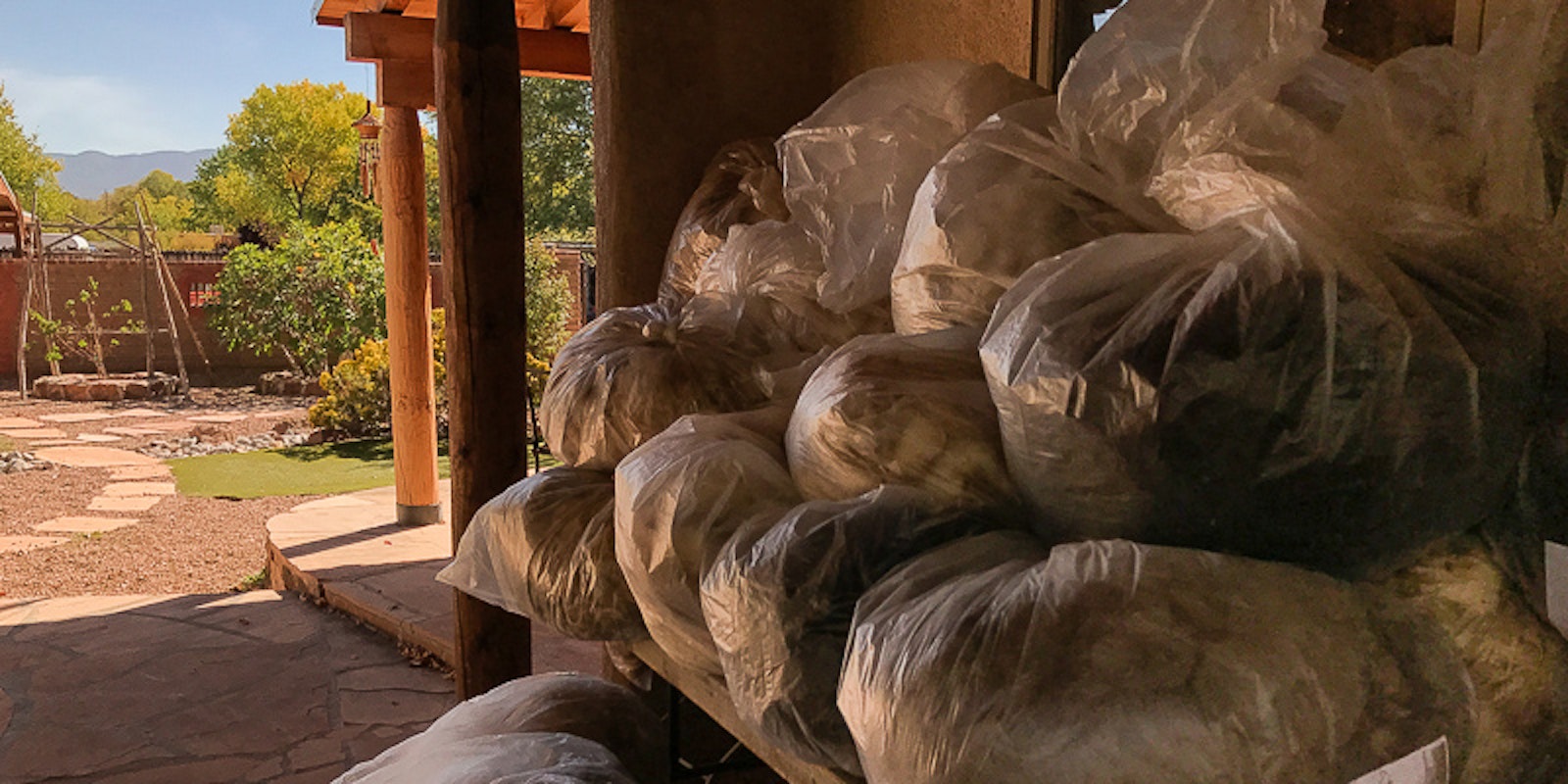In the midst of an exciting teaching trip to New Mexico this fall, I stopped in to visit The Natural Twist. This tidy, cheerful mill in Albuquerque is where Ruth Baldwin and friends work their fiber magic on piles and piles of wool, transforming fleece into custom wool roving, yarn, and other products.
Ruth with Merlin, the beloved wool carder.
Ruth, who is also a handspinner, showed me around the mill as we talked about different ways she has adapted and adjusted the mill and fiber products over time. Meanwhile, we stood back and watched our spinning friend Marsha’s finewool fleece make its way through the carding mill.
(That’s one of the beauties of a small, custom woolen mill: your fleece receives individual attention, and you get back your fleece and only your fleece.)
(Clockwise from top) Fiber headed into the carder; fiber is passed from one carding drum to the next, aligning the fibers; a peek under the main drum shows you just how much dirt, chaff, and bits of junk fall out during carding; roving emerges on the other side.
Over time, Ruth has found ways to help her customers make the most of the mill process.
3 Tips for Sending Your Fleece to the Woolen Mill
1. Have your fiber washed at the mill.
Ruth has tailored her scouring procedure to prepare fleeces for mechanical carding. These fleeces need to be squeaky clean to be effectively prepared—much cleaner that if that same fleece were hand-processed. The mill’s massive water heater combined with a carefully selected detergent that works well for the local water means that Ruth can power through that greasy fleece with ease.
2. Sending alpaca? Add some wool!
Ruth prefers processing alpaca with a bit of wool in the mix. The wool helps the alpaca fiber pass through the carder smoothly as it is transferred from one part of the machine to the next.
3. Know what's going in and what you want to come out.
Having some idea about the quality of the fiber that you are sending to the mill can help you better understand what result you will receive in the end. Ruth is always happy to consult with people who ship or stop by the mill with a fleece. Processing so many different types of fleeces has helped her to anticipate what her process can do to turn that dirty fleece into clean, bouncy roving ready for spinning.
Romney yarns spun at the mill that have been dyed with both natural and synthetic dyes. Can you see New Mexico inspirations?
Read our interview with Ruth Baldwin in Spin + Knit 2017.
Featured Image: A new shipment of fleeces arrives at Ruth Baldwin’s The Natural Twist mill in Albuquerque, New Mexico. Photos by Kate Larson.
-




